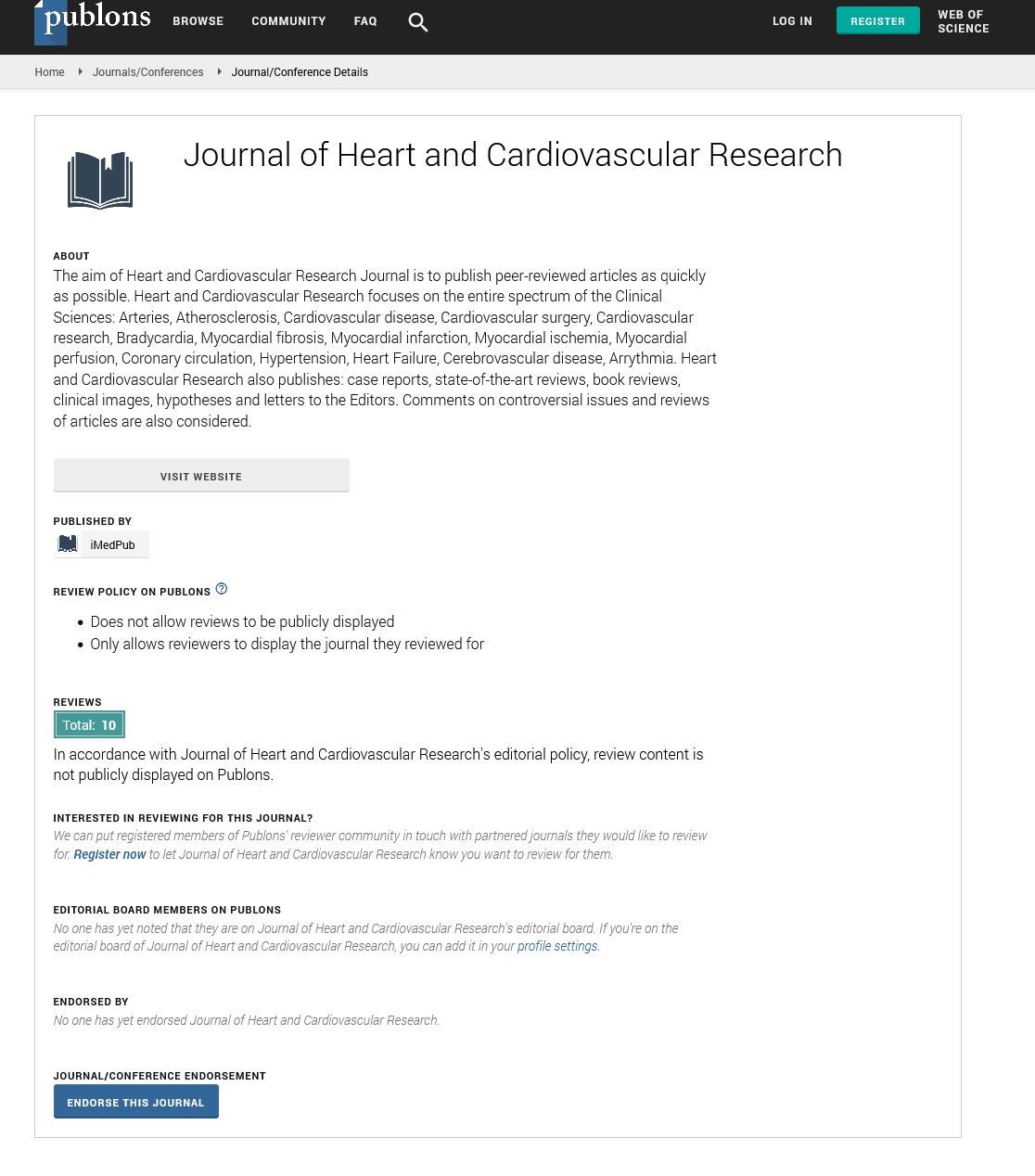ISSN : ISSN: 2576-1455
Journal of Heart and Cardiovascular Research
The waist/height indicator is pre-monitor of the Metabolic Syndrome, in children from 12 to 15 years of age in a school in the city of Guayaquil-Ecuador
22nd International Conference on New Horizons in Cardiology & Cardiologists Education
March 07-08, 2019 Berlin, Germany
Fernando Antonio Aguirre Palacios, Antonio Coca, Maria Fernanda Aguirre and Gregory Celis
University of Guayaquil, Spain
Posters & Accepted Abstracts: J Heart Cardiovasc Res
DOI: 10.21767/2576-1455-C1-003
Abstract
This is a study carried out in children in Guayaquil- Ecuador, in order to validate the indicator waist/height, with the metabolic syndrome (MS). We hypothesized the w/h index >0.50, pre-hypertension and sedentary lifestyle are three pre-monitors of MS, provided that the children have reached the Tanner V stage of their sexual maturity. 395 students from 10 to 15 years old, apparently healthy, from a densely populated and middle class area, were included. The physical examination and laboratory tests where done in search of the SM (Triglycerides, HDL Col, Glycaemia, abdominal perimeter, and blood pressure) 3 blood pressure measurements were performed, and the BMI was calculated, the w/h indicator, and plasmatic values of Insulin, HOMA, hs PCR and Interleukin 6 were included. The MS was defined according to NCEP ATP III criteria, modified by De Ferranti. The average age was 12 years. The prevalence of MS was 9.37%. The relationship of the w/h indicator with pre-hypertension and sedentary lifestyle was statistically significant with a P value of 0.001 and 0.003. In children, with normal weight w/h Index is <0.50, where no risk for MS, but with w/h>0.50 a risk of 2.2 times. In children with overweight and w/ h<0.50 the risk of MS was 0, while with an I w/h >0.50 the risk was 9.15 %. The use of the w/h I is 100% sensitive for the MS in children aged 10 to 15 years. The w/h indicator is a simple tool, together with pre-hypertension and sedentary lifestyle, are high-sensitivity pre-monitors to predict Metabolic Syndrome.
Biography
E-mail:
doctorheart00@hotmail.com
Google Scholar citation report
Citations : 34
Journal of Heart and Cardiovascular Research received 34 citations as per Google Scholar report
Journal of Heart and Cardiovascular Research peer review process verified at publons
Abstracted/Indexed in
- Google Scholar
- Sherpa Romeo
- China National Knowledge Infrastructure (CNKI)
- Publons
Open Access Journals
- Aquaculture & Veterinary Science
- Chemistry & Chemical Sciences
- Clinical Sciences
- Engineering
- General Science
- Genetics & Molecular Biology
- Health Care & Nursing
- Immunology & Microbiology
- Materials Science
- Mathematics & Physics
- Medical Sciences
- Neurology & Psychiatry
- Oncology & Cancer Science
- Pharmaceutical Sciences
